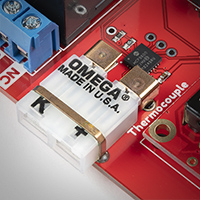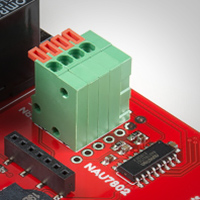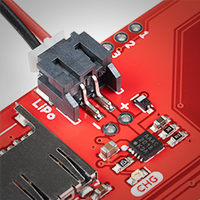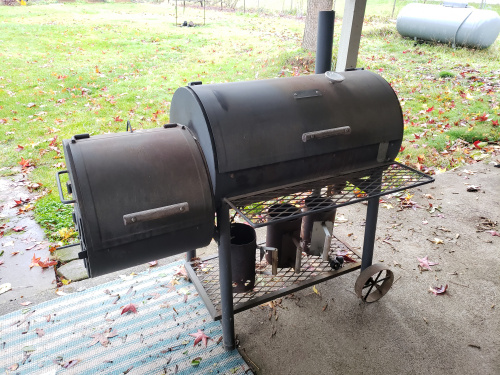I enjoy cooking. I also enjoy tinkering, building, hacking and all around doing things with my hands, so when I had the opportunity to design a board with A La Carte, I decided to combine them all into a single finished board design and see where things ended up. I was especially excited since I'm all thumbs when it comes to designing anything remotely functional in Eagle CAD, and I don't necessarily have the spare time to learn.
After a few projects that used our Qwiic boards and various development boards, I had a pretty good idea of what I wanted to create. After spending some time with ALC, looking at my projects that I had already built and looking at what was on the to-do list, I settled on the board shown above. I call it the Cuisine - think of it as a cooking IoT Dev board that has the basics with a focus on usefulness in the kitchen, but can also expand its capabilities for more specific or complicated tasks through the SparkFun Qwiic system.
To be honest, my first iterations of this project in ALC were a couple versions of “everything AND the kitchen sink,” but in reality I just wanted to cook and have this board disappear into usefulness rather than be the focus. Less is more. Enter Qwiic: By putting a Qwiic connector on my ALC design, it relieved the pressure to figure out what to get into my design before clicking the purchase button, and allows for upgrading and adding components later.
Here is a rundown of the final Cuisine board components and my rationale for choosing them.
ESP32 WROOM

From the controllers available, the ESP32 is the only one that supports WiFi. On top of that, it gives me flexibility in terms of connectivity with BLE, as well as a host of other options like AP mode, hosting its own webpage, etc. Flexibility is going to be key for the Cuisine board.
16x2 LCD Display

Cooking is part feel and part science. The science side of things is all about information, and the LCD display gives me the ability to display information I want or need for a given project. Most data you would need - timers, temperatures, weights, etc. - can easily be displayed here.
Thermocouple

The thermocouple allows me to measure temperatures in a safe, accurate and easily mountable way to integrate into existing ovens, bar-b-cue, etc.
Digital Scale

I added the NAU7802 so I can use the Cuisine board as a scale if I want to, but also to monitor weight change over time (like the weight of a shelf in my refrigerator, or the weight of a piece of meat as it's being cooked). Even monitoring the weight of the whole bin of flour and building an alert to buy more is a great use for this sensor.
Lipo Battery

I think this is an obvious choice. Many of the projects that I have planned for the Cuisine are remote, mobile and generally away from wall plugs. Battery power and charging are a must!
Qwiic Connector

I am pretty happy with the outcome of this board, and its first use will be this Thursday - monitoring my smoker as I cook a turkey for Thanksgiving. This isn’t the first time I have smoked a turkey, but it will be the first time using this smoker that I picked up for free! The Cuisine board will come in handy monitoring both the temperature of the turkey and of the smoker itself. If you have ever smoked meat, you know smokers can be fickle and cruel.
The Game Plan
For monitoring the smoker I will use the on-board thermocouple port, but I will also add a second thermocouple through the Qwiic connector for monitoring the internal temperature of the turkey. I plan to keep things simple with the LCD displaying the two temperatures so I can walk up and check on things (I plan to double-check those temperatures the old fashioned way when I move the bird, etc.).
I am also going to leverage the ESP32 to remotely monitor things as I play board games with my family and enjoy the warmth of indoors. To keep it simple I will use a reliable and straightforward application in Blynk, which is a great IoT application platform for your phone and DIY IoT hardware, and bears the heavy lift when it comes to IoT UX in this project. Less coding between now and Thursday is a good thing in my book!
So with that, tell us what you think about this strategy and my ALC project. I will probably be writing a follow-up post giving everyone the play-by-play of how this shook out over the course of Thanksgiving, as well as future projects slated for the Cuisine board.
Happy Thanksgiving everyone!


No comments:
Post a Comment